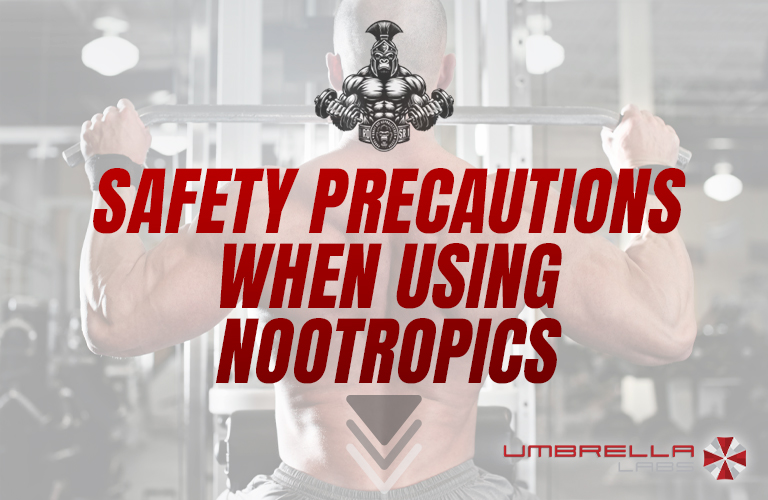
Nootropics offer a wide array of cognitive benefits, from enhanced memory and learning to improved focus and mental clarity. However, like any supplement or medication, they should be used with caution to avoid potential risks and side effects. Whether you are new to nootropics or have experience with cognitive enhancers, it’s crucial to prioritize safety when incorporating these substances into your regimen. Here are key safety precautions to consider when using nootropics.
Understand the Mechanism and Potential Side Effects
Before starting any nootropic, it’s important to thoroughly research how it works and what potential side effects it may have. Each nootropic affects the brain differently— some modulate neurotransmitter levels, others enhance neuroplasticity or improve blood flow. Understanding these mechanisms will help you anticipate how your body might respond and prepare for any possible adverse effects.
For example, stimulants like Modafinil can increase alertness and focus but may also cause insomnia, anxiety, or increased heart rate if not used properly. Similarly, glutamatergic agentsthat modulate glutamate receptors could potentially lead to excitotoxicity if overdosed. Knowing these risks allows you to take preventive measures and monitor your response.
Start with Low Doses
When introducing a new nootropic, always start with the lowest effective dose. This approach allows your body to acclimate to the substance and helps you gauge its effects without overwhelming your system. Gradually increasing the dose, if necessary, can help you find the optimal level that provides cognitive benefits without side effects.
This is particularly important for potent nootropics like racetams or peptides, where individual responses can vary widely. Starting low also minimizes the risk of overloading neurotransmitter systems, which could lead to imbalances and negative side effects.
Avoid Mixing Nootropics with Contraindicated Substances
Some nootropics can interact with other medications or supplements, leading to adverse reactions. For instance, combining stimulants with certain antidepressants or antianxiety medications may increase the risk of serotonin syndrome, a potentially life-threatening condition. Similarly, stacking multiple nootropics that influence the same neurotransmitter systems (e.g., multiple cholinergics) can lead to excessive stimulation or depletion, causing headaches, anxiety, or other side effects.
Always check for potential interactions before combining nootropics with other substances. If you are taking prescription medications, consult with a healthcare provider to ensure that your nootropic regimen is safe.
Monitor Your Body’s Response
Even when using nootropics responsibly, it’s essential to closely monitor how your body and mind respond over time. Keep track of any changes in mood, cognitive performance, sleep patterns, or physical symptoms. If you notice any negative effects, such as increased anxiety, difficulty sleeping, or gastrointestinal issues, consider adjusting your dosage or discontinuing use.
Regular self-monitoring helps ensure that you are reaping the benefits of nootropics without compromising your overall health. Journaling your experiences can also provide valuable insights into which nootropics work best for you and which ones might need to be avoided.
Cycle Your Nootropic Use
To reduce the risk of tolerance, dependency, or diminishing returns, it’s advisable to cycle your nootropic use. This involves taking breaks from certain nootropics after a period of consistent use, allowing your body to reset and maintain sensitivity to the substance. For example, with stimulants or racetams, you might use them for several weeks and then take a week or more off before resuming.
Cycling also helps prevent potential long-term side effects that could arise from the continuous use of certain nootropics. It ensures that your brain and body are not constantly subjected to the same stimulus, which could lead to adaptation or imbalance.
Consider the Quality and Source of Nootropics
The effectiveness and safety of nootropics largely depend on their quality and purity. Always purchase nootropics from a reputable source like Umbrella Labs, which provides thirdparty testing to verify the purity and potency of their products. Poor-quality nootropics may contain contaminants or incorrect dosages, leading to unexpected and potentially harmful effects.
Umbrella Labs, emphasizes the importance of pharmaceuticalgrade compounds that undergo rigorous quality control. Ensuring that you are using high-quality nootropics from trusted suppliers reduces the risk of contamination and enhances the safety of your cognitive enhancement efforts.
Consult with a Healthcare Professional
If you have any underlying health conditions or are taking prescription medications, it is crucial to consult with a healthcare professional before starting any nootropic regimen. This is especially important for individuals with preexisting conditions such as cardiovascular issues, mental health disorders, or metabolic conditions.
Conclusion
While nootropics can provide significant cognitive benefits, they should be used with care and responsibility. By understanding the mechanisms of action, starting with low doses, avoiding contraindicated combinations, monitoring your body’s response, cycling use, ensuring quality, and consulting with healthcare professionals, you can maximize the benefits of nootropics while minimizing potential risks. Safe and informed use of nootropics is the key to achieving optimal cognitive enhancement and maintaining long-term brain health.

